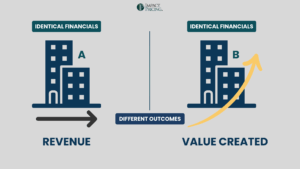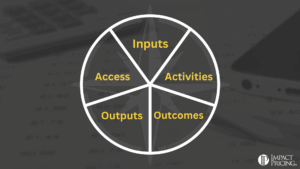You can listen to the full audio version of this blog we call — Blogcast.
Pricing AI is one of the hottest topics in tech right now and also one of the hardest. The key challenge? Choosing the right pricing metric.
A great pricing metric (what you charge for) is highly correlated with value customers receive. When you add AI to your product portfolio, you are likely changing the way you deliver value to your customers.
Companies who traditionally charge by “seat” or “user” face the biggest challenge when moving to AI. Seat-based pricing worked when more users correlated with more value to the customer and more revenue for the seller. And, it was easy to understand and manage.
But AI doesn’t work that way.
AI is often about automating work and reducing the number of people needed for a task or making them dramatically more efficient. That means traditional seat-based pricing, which ties revenue to the number of users, can actually be inversely correlated with the real value AI delivers. If your AI product replaces seats rather than empowering them, per-seat pricing doesn’t make sense (or cents). The more value your customers receive, meaning fewer workers, the less revenue you make.
Instead, AI forces us to rethink the core unit of pricing:
- Usage-based pricing (like API calls or data processed)
- Outcome-based pricing (like error reduction, cost savings, or revenue lift)
- Token-based pricing (which tracks underlying compute costs but isn’t necessarily linked to customer value)
- Or a blend, a hybrid model that combines a base fee with usage or outcome-based elements
Each of these metrics has trade-offs, which we will explore in future posts.
Seat-based pricing still works well in some AI applications, especially for co-pilots like GitHub Copilot or Microsoft Copilot in Office. Here, the AI is an assistant that augments individual productivity, so per-seat pricing stays tightly aligned with the value delivered.
But as soon as the AI fully automates a process, like an autonomous agent handling support tickets or AI running an entire workflow, seats no longer make sense. In these scenarios, good pricing metrics should be highly correlated with value delivered. Metrics that stay aligned with outcomes, like process volumes, data handled, or the buyer’s bottom-line improvements, are far more relevant.
This is why pricing AI is so tricky. It’s not just about finding the right number, it’s about finding the right way to measure the value delivered. If the metric doesn’t track closely to real buyer outcomes, trust breaks down and adoption stalls, even if your AI itself is transformative.
The companies that win in this new landscape will shift from legacy seat-based thinking to metrics that truly reflect AI’s ability to transform work. As AI changes how work gets done, only the pricing metrics that mirror that transformation will unlock its full potential.
Share your comments on the LinkedIn post.
Now, go make an impact!
 Tags: AI, pricing, Pricing AI, pricing foundations, pricing skills, pricing value, value
Tags: AI, pricing, Pricing AI, pricing foundations, pricing skills, pricing value, value













